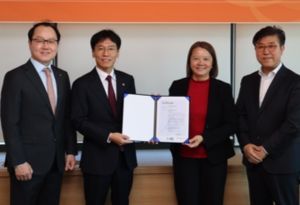Budget Cuts to Migrant Worker Support Centers
Received Letters from Eight Asian Countries

When migrant workers unfamiliar with domestic affairs are sued or charged, they often fail to respond appropriately. The places that aid these migrant workers are the approximately 40 migrant support centers nationwide.
However, the government has completely cut the budget for these centers for the following year.
The annual budget for the nationwide migrant worker support centers is 7 billion won (about $5.9 million). The Ministry of Employment and Labor said they would take over the work instead of the budget cuts, but concerns have already arisen due to a lack of experience and expertise. Asian countries that have signed employment permit agreements with Korea echoed the voices.

According to Hankyoreh, the Ministry of Employment and Labor recently received a letter from Asian countries that signed a non-professional employment (E-9) visa agreement with Korea regarding the budget cuts to the migrant worker support centers at the end of September. This was about two weeks after the government submitted a full budget cut proposal to the National Assembly.
An official from the Ministry of Employment and Labor explained, “The content was more about ‘wanting to hear an explanation’ rather than expressing concerns.” Still, an official from an Asian embassy that sent the letter said, “We expressed our concerns.”
The letter was sent after labor officials from 16 Asian embassies, who are signatories, discussed the matter and collectively concluded that “there is a problem.” Regarding the Ministry of Employment and Labor’s position, characterizing it as a simple inquiry, they expressed their inability to understand it, stating, “We clearly expressed our opposition.”

Meanwhile, the employment permit system, which allows small and medium-sized enterprises that cannot secure domestic human resources to legally employ non-professional foreign workers by obtaining an employment permit from the government, was implemented in August 2004. Foreign workers from 16 countries currently work in our manufacturing, construction, service, fishing, agriculture, and livestock industries.
Foreign workers under the employment permit system are all working in 3D jobs (Difficult, Dirty, Dangerous) that young people in Korea avoid, and they are continuously increasing every year (52,000 in 2021, 69,000 in 2022, 110,000 in 2023).
In the past three years (2020~2022), the number of foreign workers’ occupational accident deaths was 363, with an annual death toll of 121 foreign workers, and among them, workplaces with fewer than 30 people accounted for 63%.
By.










Most Commented